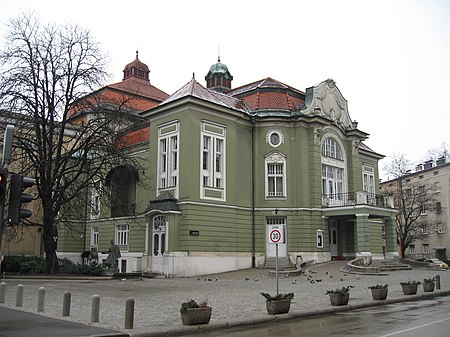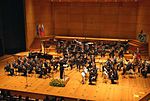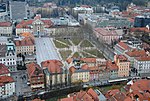Ljubljana Slovene National Theatre Drama
1867 establishments in Austria-Hungary20th-century architecture in SloveniaArt Nouveau architecture in LjubljanaArt Nouveau theatresEuropean theatre (structure) stubs ... and 3 more
Slovenian building and structure stubsTheatres completed in 1911Theatres in Ljubljana

The Ljubljana Slovene National Theatre Drama (Slovene: Slovensko narodno gledališče Drama Ljubljana, SNG Drama Ljubljana), or the Slovene National Theatre Drama in Ljubljana, is the national theatre in Ljubljana, Slovenia, best known for its conservative repertoire, including classical European dramatic texts and selected contemporary non-commercial European and Slovene ones. Its seat is the Ljubljana Drama Theatre (ljubljanska Drama) to the southeast of the Slovene Museum of Natural History and southwest of the University of Ljubljana, at 1 Erjavec Street (Erjavčeva cesta 1). It is an Art Nouveau building originally of the city's German Theatre (German: Deutsches Theater).
Excerpt from the Wikipedia article Ljubljana Slovene National Theatre Drama (License: CC BY-SA 3.0, Authors, Images).Ljubljana Slovene National Theatre Drama
Erjavčeva cesta, Ljubljana Trnovo
Geographical coordinates (GPS) Address Website Nearby Places Show on map
Geographical coordinates (GPS)
| Latitude | Longitude |
|---|---|
| N 46.048868 ° | E 14.501207 ° |
Address
Drama (Slovensko narodno gledališče)
Erjavčeva cesta 1
1000 Ljubljana, Trnovo
Slovenia
Open on Google Maps








